- Home
- Antonia Fraser
Marie Antoinette Page 19
Marie Antoinette Read online
Page 19
Almost exactly the same thing happened when an even more celebrated roué, the Duc de Lauzun, was encouraged by the spectacle—as he saw it—of a beautiful young Queen for the taking and similarly declared himself. In his case the false impression arose over a misunderstanding connected with a magnificent plume of white heron’s feathers sported by Lauzun at the salon of the Princesse de Guéméné and which the Queen admired. Her admiration forgotten, the Queen was startled to receive the plume subsequently as a present via the Princesse. Wrote Madame Campan: “As Lauzun had been wearing it, the Queen had not imagined that he could think of giving it to her.” Etiquette being all-important, Marie Antoinette now calculated that a single airing of the plume in her own coiffure in Lauzun’s presence would be sufficient to avoid giving offence. Unfortunately Lauzun’s vanity led him to magnify the favour. He too pressed his suit, and was also rejected, with the chilling regal words: “Go, sir.”7 Whereas Besenval remained part of the Polignac set, finally being too amusing to be banished, Lauzun moved to the Orléanist opposition circle.*36
There is a sense of hysteria about these rejections. But it was an understandable hysteria; the Queen was only too well aware that her chastity, like the state of her marriage, must always be a subject of gossip and conjecture. For example, a whole romance was built round an incident in which a good-looking if slightly foolish young man in the household of Artois, called “le beau Dillon,” fainted in public. The alarmed Queen placed her hand over his heart to check for signs of life—a spontaneous gesture, which was either “imprudent” or concerned, depending on the point of view.9 She repaid those who badmouthed her on the subject with an intense dislike. One notable example was the malicious Prince Louis de Rohan, French ambassador in Vienna, about whom she began to share her mother’s feelings of acute disapproval.
More seriously, her undeniable enjoyment of the company of the Comte d’Artois himself, the most attractive royal brother, would become a long-running favourite of the libellistes. They drew obscene conclusions about the Queen’s pleasures by contrasting Artois’ evident virility with Louis XVI’s impotence. In fact the attitude of Marie Antoinette to Artois had something of the big sister about it (she was two years older than he) even if she did have more tastes in common with him than with her husband. In any case, had Marie Antoinette indeed chosen to embark on a real love affair at this stage, her brother-in-law was the last man she would have chosen. The danger of revelation was far too great in view of the fact that Artois’ own children had much to gain from the Queen’s ruin; their chances in the succession would have been improved still further.
With the whole question of physical intimacy in her marriage unresolved, it would be natural for Marie Antoinette to feel awkwardness if not outright disgust at the whole sexual process. Certainly Madame Campan called her personal modesty “extreme.”10 Marie Antoinette understandably appreciated admirers who courted her without pressing their suit, either out of respect or because they were in fact romantically engaged elsewhere. With the handsome young Swedish aristocrat Count Fersen far away from France (insofar as their brief encounter had been remembered by either party), it was the gallantry of older men that bolstered the Queen’s selfconfidence and allowed her to give vent to her taste for harmless flirtation. The Duc de Coigny, for example, one of her clear favourites, was almost twenty years her senior. He had been a good soldier in the Seven Years’ War, and was now the pattern of a faithful servant. His elegant manners and devotion were much commended, but to those in the know, it was clearly not an ardent relationship.
Where younger men were concerned, the foreign-born were particularly welcome because their material expectations at Versailles would not match those of the French and they might also avoid some of the many interfamilial intrigues that plagued the court. Marie Antoinette was fascinated by several of the other personable young Swedes at court, with their dashing appearance and excellent French. Then there were various British aristocrats from across the Channel who made an appearance at Versailles as part of the constant Anglo-French connection at the court level, which somehow floated lightly above more mundane political differences. Indeed, the Emperor Joseph (who had an extremely low opinion of Austria’s former ally) accused his sister of flirtatiousness where “useless” young English people were concerned. A few years later, whether flirtatiously or not, Marie Antoinette certainly relished the spectacle of the young Lord Strathavon, who possessed a famously well-turned pair of legs, dancing the Highland Fling at Versailles. She also danced with “this charming Scot” herself, presumably something more conventional.*3711
More serious and long-lasting relationships were enjoyed by Marie Antoinette with the Prince de Ligne and Count Valentin Esterhazy, respectively twenty years and fifteen years her senior. The Prince’s roots were in Belgium but he had come to Vienna at the age of sixteen; his mother was a princess of Salm and his wife—to whom he had been married about the time Marie Antoinette was born—a princess of Liechtenstein. Thoroughly cosmopolitan, he could claim cousinage of sorts not only with the Habsburgs but also with the Kings of France, Prussia and Poland. Such a man, who described himself as feeling “an Austrian in France [where he had a house in Paris in the rue Jacob] and a Frenchman in Austria,” could not fail to appeal to the expatriate Marie Antoinette. Furthermore, for “elegance of mind and manners,” the Prince de Ligne never had an equal, according to Madame Vigée Le Brun.12
Count Valentin Esterhazy was of Hungarian origin but he had been brought up in France and had fought well in the Seven Years’ War. Madame de la Tour du Pin wrote that the Queen addressed Esterhazy as “brother” and treated him as friend. The Empress expressed surprise that such a “whippersnapper” of no particular distinction should be a member of her daughter’s circle; her view was coloured by the part that Esterhazy’s Hungarian family had played in an uprising against her. But Esterhazy showed himself unselfish as well as a dashing courtier; the Queen rewarded his fidelity by helping to arrange his marriage to a wealthy young heiress, to whom Esterhazy became notably attached. He was also approved by Louis XVI, who wrote him a delightful little note on the arrival of his son: “A little Hussar has been born,” signed “A Person at Versailles.”13
The Queen’s innate chastity, the fact that her virtue was “intact, even strict” in the words of Emperor Joseph, who kept himself well informed on the subject of his sister’s failings, did not mean that she was without faults. It meant merely that she was without that particular one—sexual promiscuity—that would be generally ascribed to her in the future by those who did not know her. There was beginning to be something desperate about her enjoyment of pleasures, that rapidity with which she turned from one to the other. The levity, the lightness of spirit, the volatility, that quality called by the French légèreté for which there is no exact English equivalent, with which Marie Antoinette is so much associated in the popular mind (and in many historians’ minds), can be traced back to this period, when disappointment in her marriage began to be masked by enjoyment of her position.14
The girlish laughter of her early years in France had not gone away. But as the Prince de Ligne observed, “the great queens of history” did not laugh. This irreverent spirit—defensive in origin—was not denied by those who admired Marie Antoinette. “The gaiety of her character led to mockery,” wrote the Comte de La Marck and that was a fault in someone in her position, especially as the people around her pandered to her desire to be amused in this manner. The older women of the court in particular were affronted. Marie Antoinette the moqueuse should perhaps have borne in mind the saying of the cynical Marquise de Merteuil in Les Liaisons Dangereuses: “Old women must not be angered, for they make young women’s reputations.”15
Of course the stories became exaggerated, especially in circles where “the Austrian woman” had not been welcome in the first place. There was a persistent tale of the Queen making fun of the dowagers in their old-fashioned black, come to pay their respects on the accession of the
King. According to Madame Campan, the truth was very different. It was the Queen who tried desperately not to laugh, hiding her face behind her fan, at the mischievous behaviour of the old Marquise de Clermont-Tonnerre. Although she should have been standing up, the Marquise actually sat down unseen behind the wide-hooped skirts of the court ladies, twitching them as she indulged in “indiscreet drollery.” A malicious little verse commemorated the supposed incident:
You’ve given offence a-plenty
Little Queen of only twenty
You’ll go home to Austria
Fal lal lal, fal lal . . .16
When all was said and done, the Queen was now officially answerable to no one—except the King. For example, Louis agreed readily to the idea of a Rousseau-esque adventure on behalf of the Queen and courtiers to watch the dawn, so long as he personally, devoted to his sleep, did not have to participate. The presence among others of the Comtesse de Noailles, still at this point Mistress of the Household, who stayed close to the Queen’s side at all times, was sufficient guarantee of the respectability of this outing. There were also, of course, bodyguards present. The Queen, who had got the idea from Marmontel’s Histoire des Incas, was ecstatic, exclaiming over and over again: “How beautiful it is! How truly beautiful!” She said that she now understood why Incas worshipped the sun. This innocent scene, so characteristic of the sensitivities of Marie Antoinette, was transformed into an outright orgy in the first scurrilous pamphlet that was addressed to the Queen personally, Le Lever d’Aurore. She was said to have overcome the problem of her ladies’ attendance by stealing away into the shrubberies for amorous encounters.17
The King was furious; he always reacted chivalrously to insults to his wife. The state censorship common to the eighteenth century meant that a licence was necessary for printing, which was why a great many of the obscene libelles, including those of the previous reign against the Du Barry, were printed in Holland and England for clandestine importation. The author, identified as the Abbé Mercier, was imprisoned in the Bastille. But the libelles did not cease. The Queen was accused of dalliance in yet another thicket immediately after the coronation, in the so-called Aventure de la Porte-Neuve. The continuing need to emphasize the outdoor setting of the Queen’s illicit couplings was due to the demonstrably large entourage that generally surrounded her in public. Here the physique and performance of an unknown lover was said to have been greeted with enthusiasm by Marie Antoinette: “Prince, lord or simple gentleman, you’re Hercules in the form of Adonis.”18
The satirical attacks at this point were, however, no more than an unpleasant douche of cold water. Marie Antoinette herself was left with the alternatives of weeping or shrugging them off with laughter that was intended to show disdain. In fact, she did both by turns. Tears were provoked by the sheer unfairness of it all—“these miserable gazettes,” as she termed them to Maria Teresa. She took to singing the refrain of Les Nouvelles de la Cour, the obscene attack on the King’s potency referred to earlier, in an effort to demonstrate a sophisticated indifference.19
For the time being the disdainful mode of reaction prevailed, as though the Queen found it impossible to take these anonymous ambuscades seriously. When Maria Teresa was shocked by the “inveterate hatred” manifested in such publications against “the Austrians, my person and my poor innocent Queen,” her daughter urged her not to condemn a whole nation for the sins of a few scandalmongers. An important factor in Marie Antoinette’s attitude, ironically enough, was her belief that the French people were fundamentally volatile and inclined to express things with “their pens and their tongues” that were not actually in their hearts. She herself in contrast prided herself on her own German sobriety: “I shall always glory in being one,” she told her mother and she only wished that the people of “this country” (ce pays-ci*38) had some of the good German qualities.20 As the Queen’s lack of seriousness became a target of the anonymous libelles, she herself thought it was the satirists who were not to be taken seriously. There was the possibility of a dangerous misunderstanding here.
In fact the libelles and the gazettes, while inventing freely on the subject of Marie Antoinette’s lewd conduct, had more of a case when it came to her extremes of fashion. Maria Teresa waxed indignant when she read about these coiffures. Three feet high, and so many feathers and ribbons! “A young and pretty Queen, full of charms, has no need of these follies,” fulminated the Empress.21
But then it could be plausibly argued that one of the duties of the Queen of France—the centre of the world of fashion, which had a strong commercial motive to remain so—was to see that the modes flourished by leading them. The feathers that annoyed the Austrian Empress were made so popular by Marie Antoinette that a lucrative trade sprang up. If Louis XVI gave his wife a jewelled feather (aigrette) that was ornamented with diamonds which he already owned, as a hint to put it in her hair instead of real feathers, this was not an option open to every husband. As for the elaborate headdresses, nicknamed poufs, these might allude to the wearer’s state—a miniature baby and nurse to indicate the recent childbirth of the Duchesse de Chartres, a tiny funeral urn for a widow—or to a current craze such as ballooning, or to political events such as the American Revolution.22
It was easy for Maria Teresa to condemn these as ridiculous, from the viewpoint of another country and another generation. To put it at its most practical, Paris was a city dependent on the financial support of the noble and rich to maintain its industries, which were in the main to do with luxury and semi-luxury goods. For foreigners, fashion was part of the point of being in Paris; Thomas Jefferson subscribed to the magazine Cabinet des Modes and sent fashion plates back to ladies of his acquaintance in America. As the Baronne d’Oberkirch remarked on her first visit to the French capital, the city would be sunk without its luxurious commerce.23 In a country where details of appearance, costume and presentation were “vital matters,” as the Savoyard ambassador had observed on the subject of the Comtesse de Provence, Marie Antoinette was an appropriate consort.
It was the personal extravagance of Marie Antoinette that could be criticized rather than her modishness. The Queen’s relationship with the imaginative, talented and extremely domineering couturier Rose Bertin was either a magic union or a folie à deux, depending on the point of view. It was Mademoiselle Bertin who gave orders to the tailor, receiving back a plain, unadorned shape on which she proceeded to let her fruitful imagination play. Against the spectacle of an exquisitely dressed Queen, her appearance a work of art in itself—French art—must be put in the balance the dress bills that mounted, and the dress allowance that was never ever enough. (Although even here one might point out the vast bills run up with Bertin by the Du Barry in the previous reign—100,000 livres a year on silks and laces alone.)24
The arrogance of Rose Bertin in her shop in the rue Saint-Honoré became a byword as news of the Queen’s custom spread. There was a story of the provincial lady who came to ask for something new for her presentation at Versailles. Bertin surveyed her from top to toe and then with a regal air turned to one of her helpers: “Show Madame my latest work for Her Majesty.” About eight years older than Marie Antoinette, Bertin was introduced to court circles by the Duchesse de Chartres, and was swiftly nicknamed “the Minister of Fashion.” Her clients included the Princesse de Lamballe, who spent extremely freely, as well as numerous foreign royalties, with Russian aristocrats particularly plentiful among them.25
It has been estimated that the couturier visited the Queen roughly twice a week from the accession onwards, being received in her inner cabinet. In contrast the celebrated hairdresser Léonard only came to Versailles once a week, on Sundays, leaving the daily work to others including his assistant, known as “le beau Julian”; but that was because Léonard’s salon in Paris in the week was so violently busy, rather than a measure of economy. A lively, good-humoured Gascon, with a sharp wit—and a star’s temperament—his triumphal arrival as a coiffeur was described by Madame de Genlis: �
�Léonard came, he came and he was king.” As for Bertin, it was not helpful that the dressmaker did not bother to present detailed accounts, as one of Marie Antoinette’s Mistresses of the Robes, the Comtesse d’Ossun, complained. However, succeeding Mistresses of the Robes themselves were not always competent accountants, although handling of the royal accounts was supposed to be one of the duties of the position.26
By the end of 1776, the Queen, who had a dress allowance of 150,000 livres, had managed to incur liabilities of nearly 500,000 livres. Six months earlier she had bought a pair of chandelier diamond earrings, partly on credit and partly by exchanging some of her own gems, from the celebrated Swiss jeweller Boehmer. The King paid up “at her very first word” according to Mercy. Again when she bought a pair of diamond bracelets for 400,000 livres, she had to borrow from the King, who did not complain.*3927
Of course to complete the picture, it should be pointed out that the entire royal family was prodigiously extravagant, seeing little connection between what they spent and what they had to spend. This included the pious royal aunts, capable of using up 3 million livres in a six-week expedition to Vichy to drink the waters. Then there was the Comte d’Artois, a noted spendthrift who regularly had his debts paid by his elder brother; they soon reached a total of 21 million livres. The Comtesse de Provence, quickly forgetting her modest Savoyard upbringing, also began to spend lavishly. As for the Comte de Provence, he would have debts of 10 million livres paid by Louis XVI in the early 1780s.28

 Warrior Queens
Warrior Queens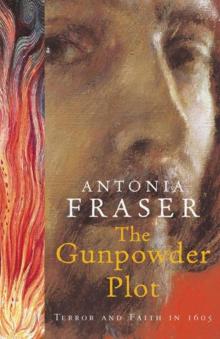 The Gunpowder Plot
The Gunpowder Plot Cromwell
Cromwell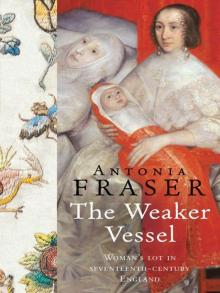 The Weaker Vessel: Women's Lot in Seventeenth-Century England
The Weaker Vessel: Women's Lot in Seventeenth-Century England Marie Antoinette: The Journey
Marie Antoinette: The Journey Oxford Blood
Oxford Blood Your Royal Hostage
Your Royal Hostage Cool Repentance
Cool Repentance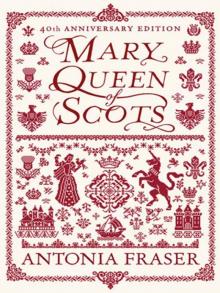 Mary Queen of Scots
Mary Queen of Scots Political Death
Political Death Royal Charles: Charles II and the Restoration
Royal Charles: Charles II and the Restoration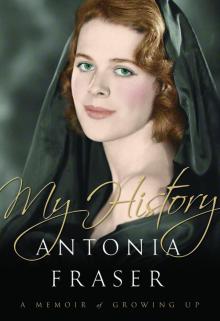 My History: A Memoir of Growing Up
My History: A Memoir of Growing Up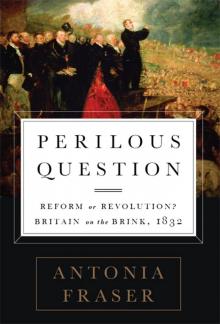 Perilous Question: Reform or Revolution? Britain on the Brink, 1832
Perilous Question: Reform or Revolution? Britain on the Brink, 1832 Jemima Shore at the Sunny Grave
Jemima Shore at the Sunny Grave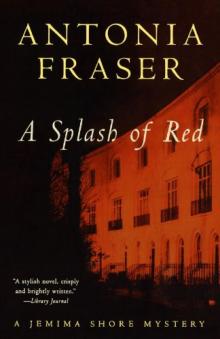 A Splash of Red
A Splash of Red Must You Go?: My Life With Harold Pinter
Must You Go?: My Life With Harold Pinter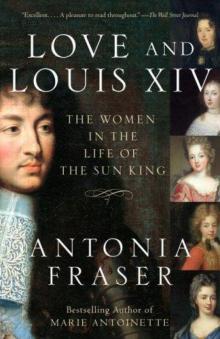 Love and Louis XIV: The Women in the Life of the Sun King
Love and Louis XIV: The Women in the Life of the Sun King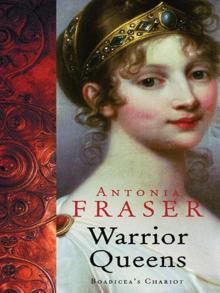 The Warrior Queens
The Warrior Queens The Wild Island
The Wild Island Quiet as a Nun
Quiet as a Nun Perilous Question
Perilous Question Cromwell, the Lord Protector
Cromwell, the Lord Protector Gunpowder Plots
Gunpowder Plots The Wild Island - Jemima Shore 02
The Wild Island - Jemima Shore 02 Gunpowder Plots: A Celebration of 400 Years of Bonfire Night
Gunpowder Plots: A Celebration of 400 Years of Bonfire Night Gunpowder Plots_A Celebration of 400 Years of Bonfire Night
Gunpowder Plots_A Celebration of 400 Years of Bonfire Night Marie Antoinette
Marie Antoinette Must You Go?
Must You Go?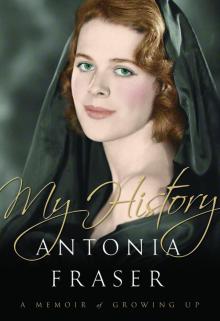 My History
My History